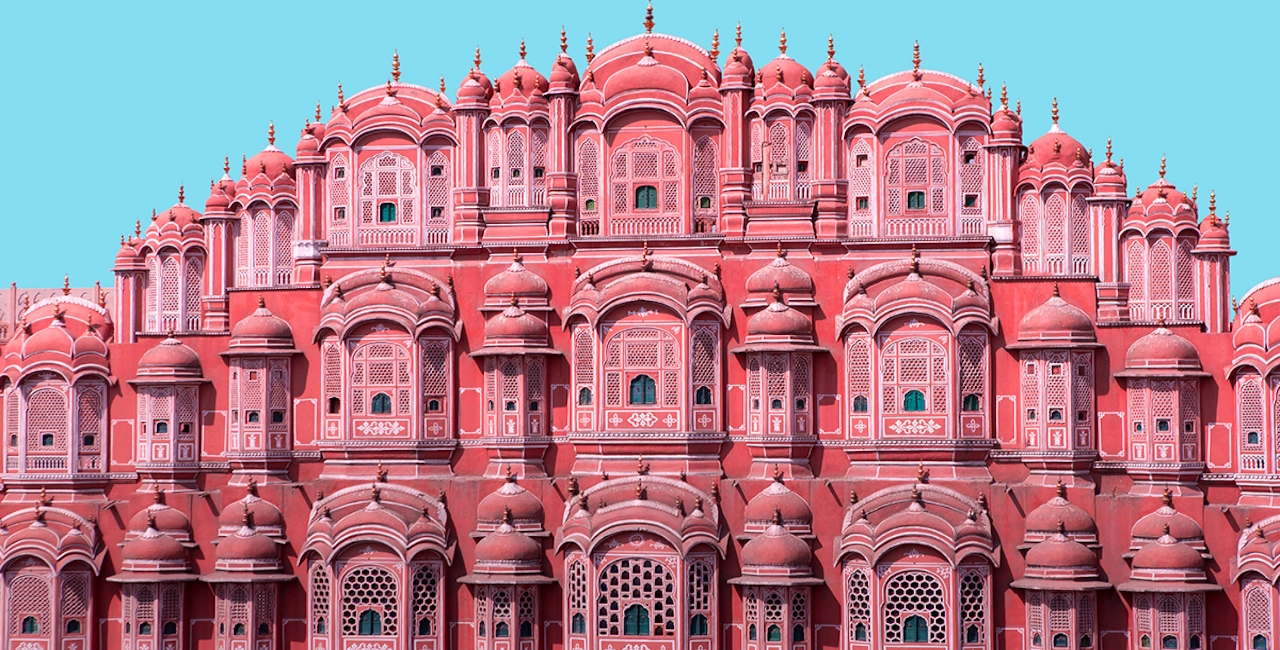Jaipur, the capital city of Rajasthan, India, is a vibrant blend of old-world charm and modernity. Often referred to as the “Pink City” due to the distinctive color of its buildings, Jaipur is renowned for its rich history, magnificent architecture, and bustling bazaars. Founded in 1727 by Maharaja Sawai Jai Singh II, Jaipur is not only a gateway to India’s most flamboyant state but also a prominent tourist destination in its own right.
Historical and Cultural Significance
Jaipur was meticulously planned according to the principles of Vastu Shastra and Shilpa Shastra, ancient Indian architectural texts. The city is laid out in a grid pattern, with broad streets intersecting at right angles. This planned approach made Jaipur one of the earliest examples of modern urban planning in India.
The city’s rich cultural heritage is evident in its numerous forts, palaces, and temples. The Hawa Mahal, or the Palace of Winds, is one of Jaipur’s most iconic landmarks. Built in 1799, this five-story palace features 953 small windows, known as jharokhas, designed to allow royal ladies to observe street festivals while remaining unseen.
Another architectural marvel is the City Palace, a sprawling complex that houses several palatial buildings, courtyards, and museums. The palace is still the residence of the royal family of Jaipur, blending Rajasthani and Mughal architectural styles. The Jantar Mantar, an astronomical observatory built by Maharaja Jai Singh II, is a UNESCO World Heritage Site and features the world’s largest stone sundial.
Natural Beauty
Jaipur is not only known for its architectural splendors but also for its natural beauty. The city is surrounded by the rugged Aravalli Hills, providing a picturesque backdrop to its historic sites. Nahargarh Fort, perched on the edge of the hills, offers stunning panoramic views of the city below. The fort is particularly beautiful at sunset, when the city is bathed in a warm, golden light.
Another natural attraction is the Jal Mahal, or Water Palace, located in the middle of Man Sagar Lake. This five-story palace, with four floors submerged underwater, appears to float on the lake’s surface. The tranquil setting, with the surrounding hills and the serene lake, makes it a perfect spot for photography and relaxation.
Attractions and Activities
Jaipur offers a plethora of attractions and activities for visitors. Amber Fort, located on a hilltop 11 kilometers from the city center, is a must-visit. This majestic fort, built from red sandstone and marble, is known for its intricate carvings, expansive courtyards, and the stunning Sheesh Mahal (Mirror Palace). Elephant rides up the cobbled pathways to the fort add to the regal experience.
For a deep dive into Jaipur’s cultural heritage, the Albert Hall Museum houses an extensive collection of artifacts, including ancient manuscripts, sculptures, and paintings. The museum, designed in the Indo-Saracenic style, is an architectural gem in itself.
Jaipur’s bustling bazaars are a paradise for shoppers. Johari Bazaar is famous for its exquisite jewelry, including Kundan and Meenakari work, while Tripolia Bazaar is known for its brassware, textiles, and traditional Rajasthani attire. The vibrant colors and lively atmosphere of these markets provide a sensory overload, capturing the essence of Rajasthan’s rich craft traditions.
Local Cuisine and Crafts
Jaipur’s culinary scene is a reflection of its royal heritage and diverse cultural influences. Rajasthani cuisine is known for its bold flavors and generous use of spices. Traditional dishes like Dal Baati Churma (lentils with baked wheat balls and sweetened cereal), Laal Maas (spicy mutton curry), and Ghewar (a sweet made from flour and soaked in sugar syrup) are a must-try for food enthusiasts.
The city’s markets are also a hub for traditional crafts. Blue pottery, an art form introduced by the Mughals, is a specialty of Jaipur. These intricately designed ceramic pieces are popular souvenirs. Block-printed textiles, hand-woven carpets, and leather goods are other notable crafts that showcase the region’s artisanal skills.
Connectivity and Accessibility
Jaipur is well-connected by air, road, and rail. The Jaipur International Airport offers regular flights to major Indian cities and select international destinations. The city’s railway station is a major junction, with trains connecting to various parts of the country. Jaipur is also accessible via a network of national highways, making it a convenient stop on the Golden Triangle tourist circuit, which includes Delhi and Agra.
Conclusion
Jaipur, with its blend of historical grandeur, cultural richness, and modern vibrancy, offers a unique and unforgettable experience. Whether you are exploring its majestic forts, shopping in its colorful bazaars, or savoring its delectable cuisine, the Pink City promises a journey filled with discovery and delight. Its timeless appeal and warm hospitality make Jaipur a destination that continues to enchant and inspire travelers from around the world.


0 Comment